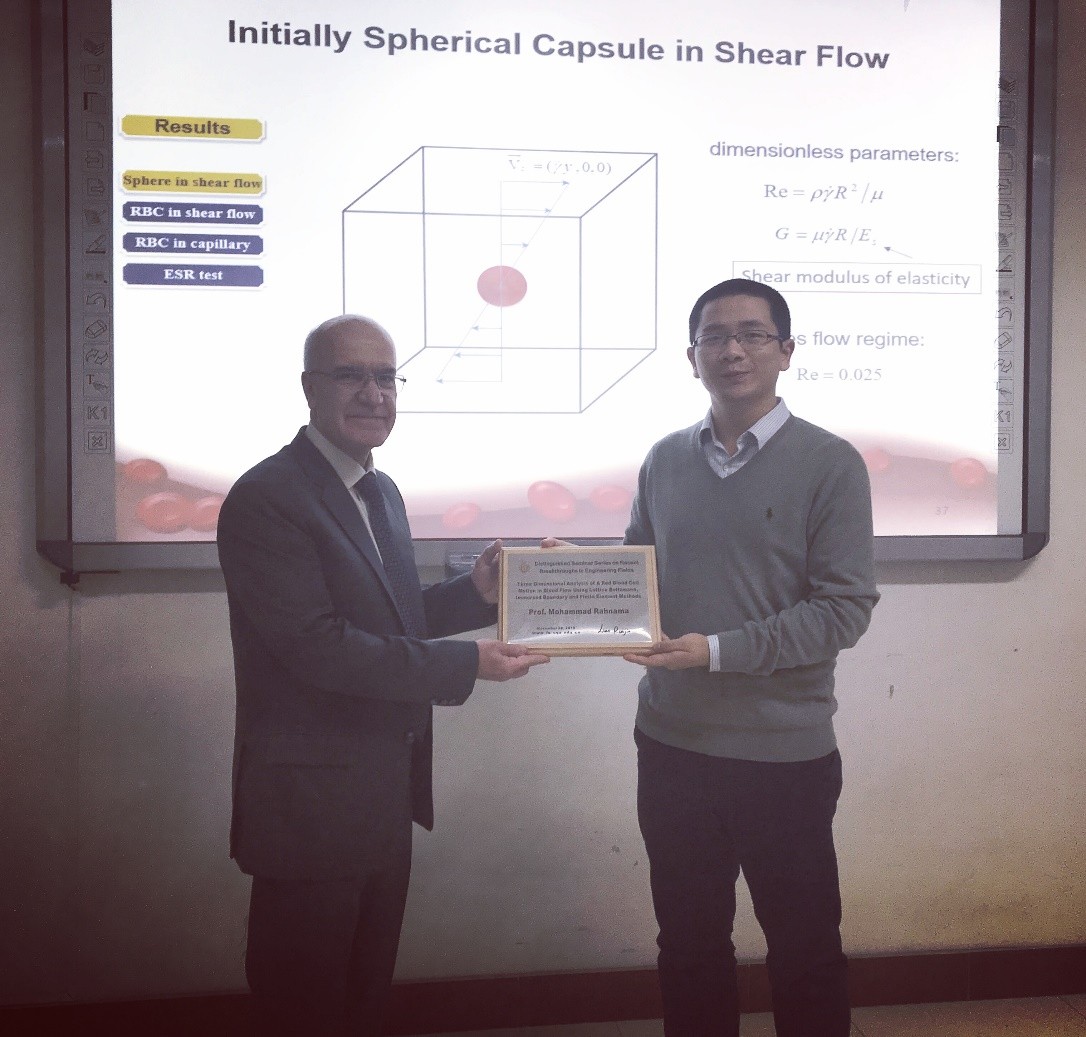November 28th, 2018, the Institute of Engineering Thermophysics at Chongqing University invited Prof. Mohammad Rahnama from the Shahid Bahonar University of Kerman, Iran to give a talk at Rm303. This talk was titled as “Three-Dimensional Analysis of a Red Blood Cell in Blood Flow using Lattice Boltzmann, Immersed boundary and Finite Element Methods”. Prof. Mohammad Rahnama has been a professor at Shahid Bahonar University of Kerman since 1990, and has been a visiting professor in University of Victoria since 2013. He has published more than 50 Journal articles and more than 60 International conference papers in the field of computational and experimental thermofluid engineering. His recent research interests are the particulate flow associated with the catalyst ink in fuel cells.
At the beginning, Dr. Biao Zhang gave a brief introduction about Prof. Mohammad Rahnamas’s research background.

Red Blood Cells (RBCs) are highly deformable cells in blood flow with their primary function of carrying oxygen from lungs to the body tissues and carbon dioxide as a waste product, away from the tissues and back to the lungs. A normal RBC which is a bi-concave disk with a diameter and thickness around 8 μm and 2 μm respectively, is able to deform from a bi-concave disk to a parachute-shape cells as it passes through veins with diameters of around 3 μm. Lack of such RBC deformability accompanies some serious diseases. Simulation of motion and deformation of RBCs shed lights to such complicated deficiencies of RBCs. In the present work, three-dimensional dynamic behavior of a red blood cell in a blood flow is simulated using a combination of Lattice Boltzmann Method (for simulation of plasma flow), Finite Element Method (for simulation of red blood cell deformation and computation of membrane forces) and Immersed Boundary Method. Investigating the motion and deformation of a red blood cell in capillary shows its deformation from a bi-concave disk to a parachute-like shape as depicted in literature. Sedimentation of a red blood cell in a vertical pipette which is filled with blood plasma, is also simulated for healthy, diabetic, sickle cells and spherocytosis for the first time.
Professor Mohammad Rahnama's talk was very informative and insightful. In the discussion session, many teachers and students has a great discussion with Prof. Mohammad Rahnama. After that, Dr. Biao Zhang awarded an honorary medal to Prof. Mohammad Rahnama, which represent the sincere thanks from the Key Laboratory of Low-Grade Energy Utilization Technologies & Systems, Ministry of Education.